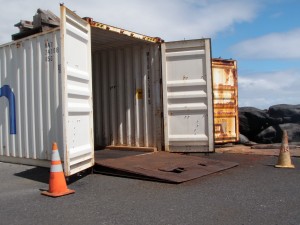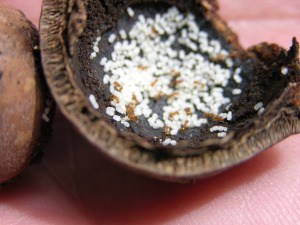
Moving interisland, or even within the island, comes with the risk of bringing invasive species along MISC file photo
Ask anyone who has moved lately – it’s a daunting task. Every move, whether across town, across the state, or across the world involves choices: what to take and what to leave behind. Depending on where you are moving to and from, some of the “take it or toss it” decisions can have a major impact on the environment. Yes, you want to take your prized orchids, but what if they are carrying a pest you don’t want at your new home? Whether you are moving to the mainland or merely interisland, you should take steps not to bring trouble with you.
Hawai‘i is particularly susceptible to introductions of foreign species and each Hawaiian island is battling its own unique set of pests—plants, insects, or animals that are not found on the other islands. For example, fireweed is ubiquitous on the slopes of Haleakalā on Maui, but it’s on target for eradication on Moloka‘i and Kaua‘i. Red-vented bulbuls, a notorious agricultural pest common on O‘ahu, haven’t yet invaded Maui. How could one of these noisy birds find its way into your luggage? You’d be surprised.
Red-vented bulbuls are cavity nesters. While they most often nest in tree trunks, these opportunists have been known to squeeze into the ends of curtain rods or the tops of ceiling fans. These pestiferous birds are suspected of making it to the Marshall Islands as stowaways in a cargo container.
Less conspicuous than bulbuls are coqui frogs. These tiny hoppers can easily travel with potted plants. Gardening and yard

A notorious hitchhiker, the coqui frog, hides in plants and cars. This frog goes through the tadpole stage inside the egg, meaning it’s even easier to spread the frog. MISC file photo
supplies like hoses, weed mats, and empty pots are perfect habitat for this noisy amphibian, so check twice before packing these things if coqui are already your neighborhood. If you do choose to bring plants or gardening gear, make sure they are clean and frog-free. Contact your local Invasive Species Committee for treatment information.
One of the tiniest yet most damaging interisland hitchhikers is the stinging little fire ant, now widespread in parts of the Big Island. An infested property can have millions of ants; one square foot can have over 1,800 worker ants with three to seven queens. It only takes one queen and fewer than a dozen workers to start a new colony. The ants can set up shop anywhere – a bed, macadamia nut shells, a computer or golf bag, so it’s easy to accidentally transfer a satellite colony to a new location. If you are moving from a little-fire-ant zone be sure you’re not packing a pest. Your family, pets, and new neighbors will appreciate it!
Shipping your car? Automobiles have been the source of new coqui populations. The small frogs find car bumpers and undercarriages the perfect place to amplify their calls. On a windy day, little fire ants rain down from trees into the beds of pickups and crevices of cars, coming along for the ride to find new habitat to invade. If you live in an infested area, check your car and consult the experts for how to rid these species from your belongings. That way you can move without compromising quiet nights and peaceful time outdoors.

Little fire ants have many queens in the colony, and by moving a queen the population spreads to new areas. If you live in an area infested with little fire ant, don’t bring the pest to your new home. Photo courtesy of Hawaii Department of Agriculture.
Are your pets moving with you? If you have a cat or dog, just check with the airline, but if your pet is on the “exotic” range of the spectrum—birds, chinchillas, rats, rabbits, guinea pigs, and even lizards—it should be cleared with the Hawai‘i Department of Agriculture. The Jackson’s chameleon, often kept as a pet on Maui, is not established on Lānaāi, Moloka‘i, or Kaua‘i. It’s an invasive species that can harm endangered Hawaiian snails and other native invertebrates if it becomes established in wild areas.
When you are researching a big move, take a few minutes to investigate how to avoid spreading unwanted species to your new home. If you are moving interisland, the island-based Invasive Species Committees are good sources of information. Call the local office or find out online what they are working to control. Any plant material should be inspected by the Department of Agriculture before going interisland. Find the contact for your local Plant Quarantine Office here: http://hdoa.hawaii.gov/pi/plant-quarantine-contacts/. Bring the memories – but leave the pests behind.
By Lissa Fox Strohecker. Originally published in the Maui News, March 9th, 2014 as part of the Kia‘i Moku Column from the Maui Invasive Species Committee
